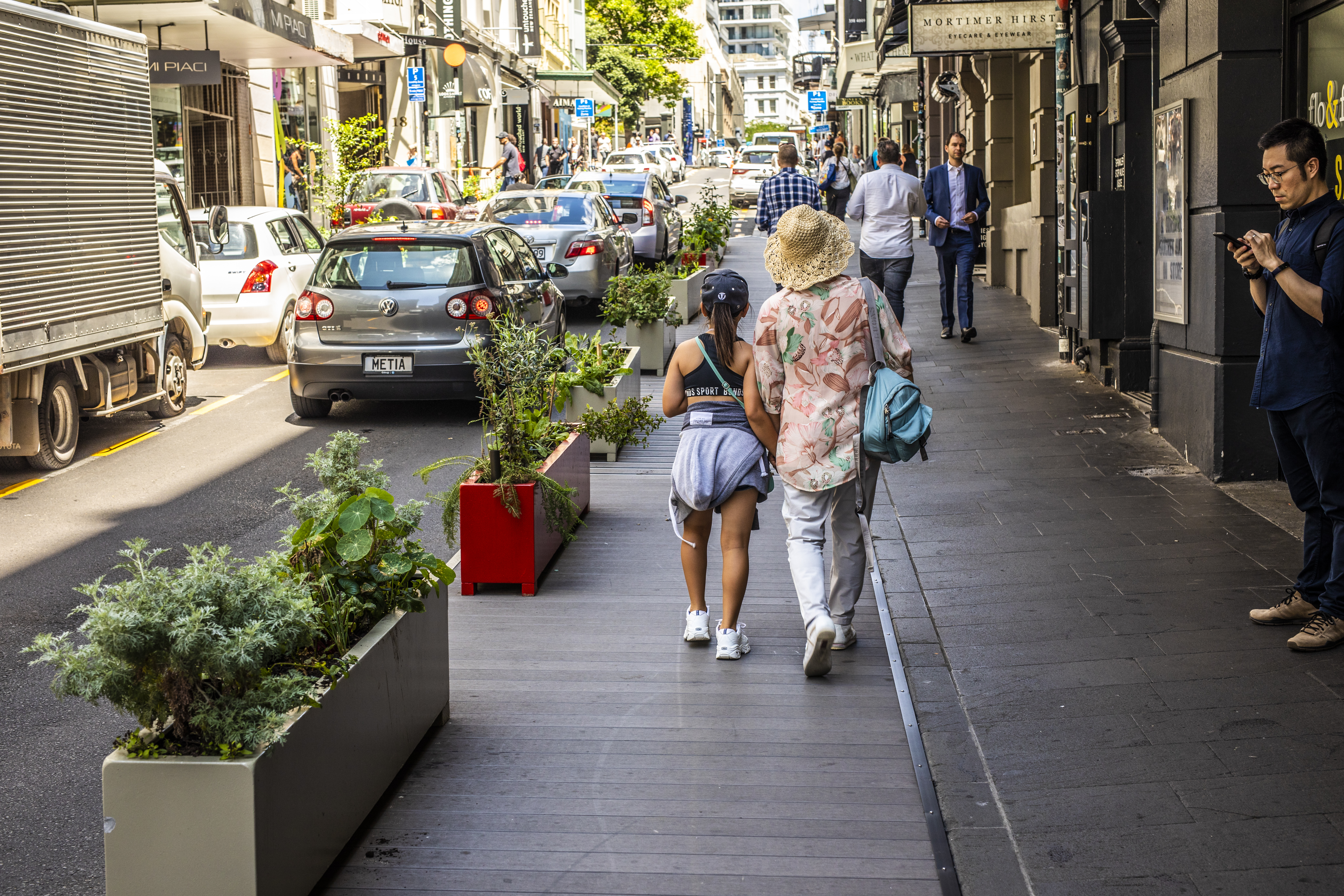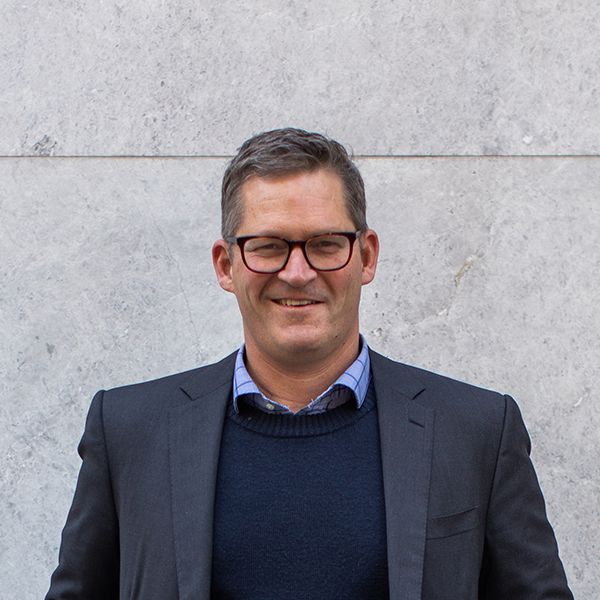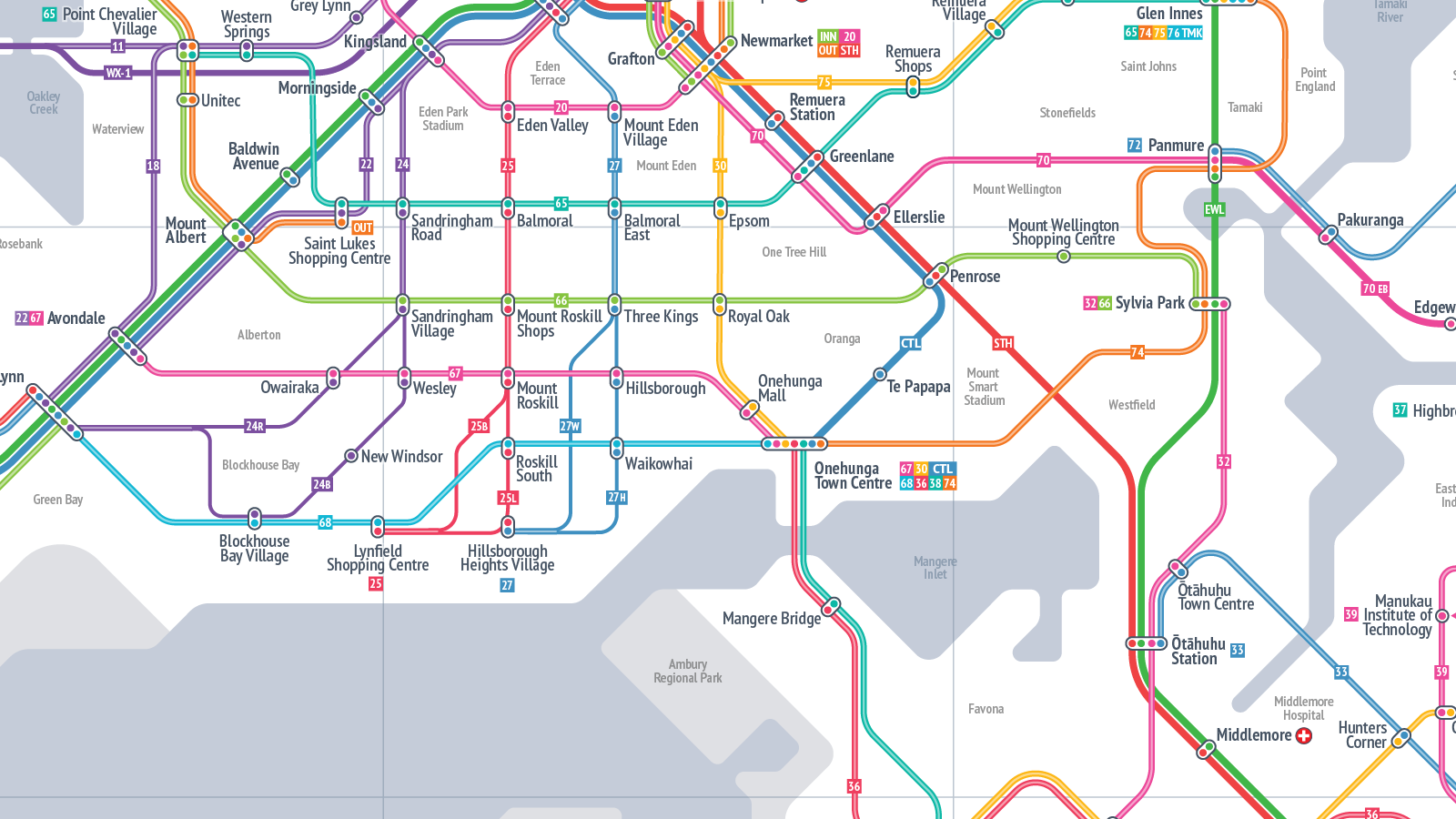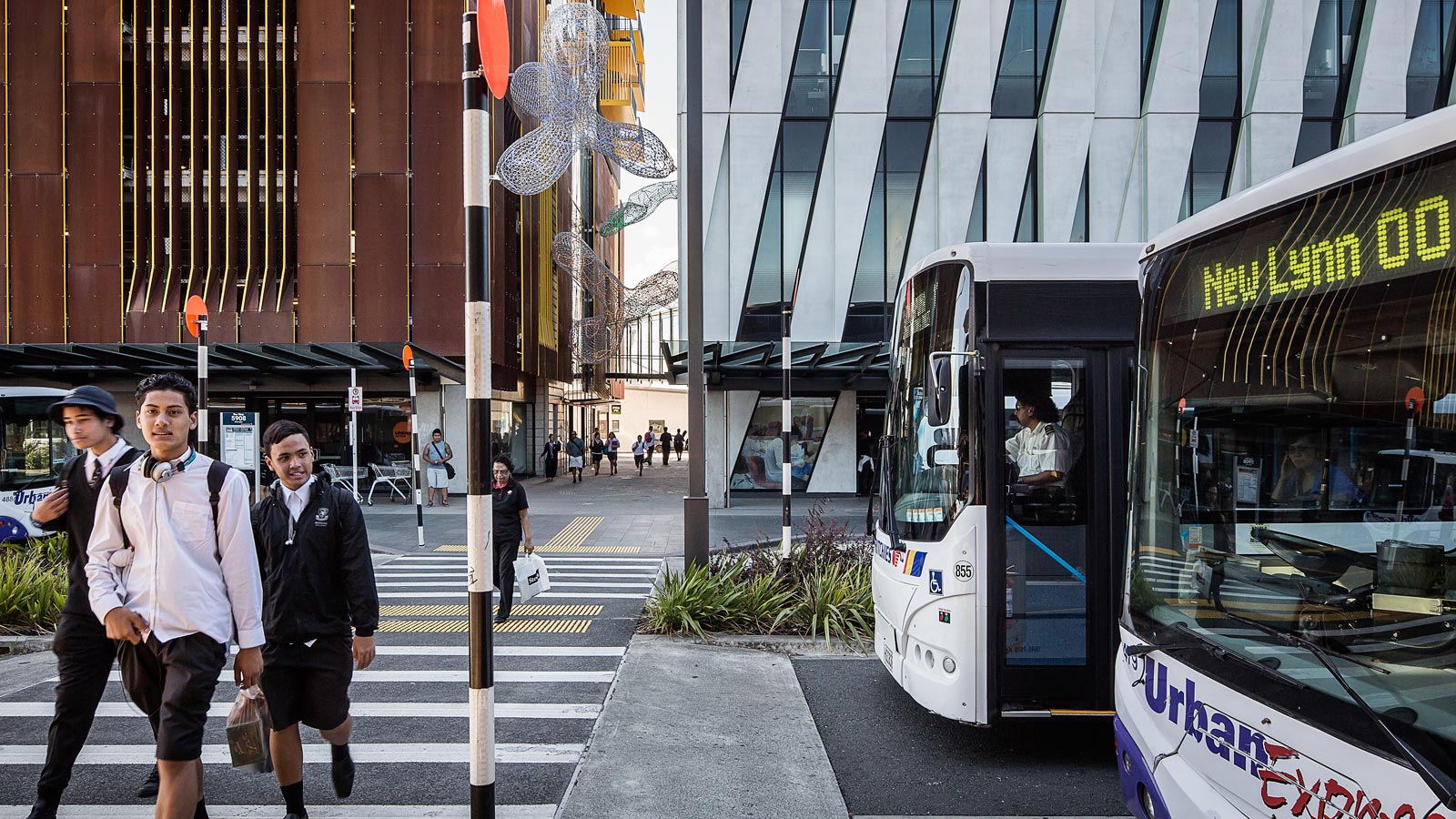Access for Everyone (A4E) is a bold traffic circulation strategy, developed by MRCagney with Auckland Council. The strategy reshapes transport circulation, street design, and street operations in Auckland’s city centre. The first of its kind in Australia and New Zealand, the plan reallocates space in the city away from private vehicles and towards more efficient uses such as public transport, walking, cycling. Its implementation will lead to significant benefits for the city’s environment, economic prosperity, and attractiveness.
The plan has been adopted as a core part of Auckland’s Central City Masterplan, which was approved by Auckland Council in March 2020, and detailed planning for its implementation is now underway.
Traffic Circulation Plan
The crux of A4E is a traffic circulation plan. Starting with a car-free Queen Street A4E removes through traffic from the city centre by creating separate traffic cells, each with its own traffic access routes.
A4E redefines the city centre street network by function. Instead of a street network with universal permeability for all users it creates different networks for different types of traffic. This network ‘unbundling’ means cars use different routes than everyone else and not all routes are accessible by cars.

Key to enabling A4E is transit only sections of corridors that speed up and promote buses and light rail vehicles over cars. By removing through-traffic, A4E also creates ‘traffic light’ streets that support cycling, disability access and city logistics like business service and delivery.
After developing the concept, MRCagney was engaged to test its implementation in one of the local traffic access zones. MRCagney prepared a detailed case study for the Downtown East area. The case study investigated how the concept could work, and revealed information highly relevant to future planning work.
The case study found that the priorities of A4E - allowing abundant, safe access across the city centre for everyone - can be delivered while maintaining drivers' access to carparking and destinations. The investigation found that both repurposing street space fo rthe public realm and improving service and delivery access can be achieved simultaneously through infrastructure changes and a new access management system.
The case study found the A4E concept would likely create broad benefits for pedestrians and public transport users, including:
- More public space
- Improved safety for pedestrians in the city
- A healthier environment to live, work and play
- More easily able to reach their destination.
This highly innovative approach to central city transport planning and urban design has already begun to be implemented in a series of trials, notably along High Street – an area associated with narrow, crowded footpaths. The trial on High Street includes removing on-street parking and installing temporary kerbside build outs, which reallocate space away from cars and to pedestrians. This low-cost trial has transformed High Street into a thriving public space and improved conditions for disabled users, and people cycling.

MRCagney won a Silver Award at the 2020 ACE Awards for the innovation and informed expertise in transportation and urban design involved in A4E. Additionally, MRCagney and Auckland Council received the Sustainability Award acknowledging the importance A4E will contribute to mode shift and creating a more people-focused city centre.
Team
-
 Kent Lundberg
Kent Lundberg
Technical Director

